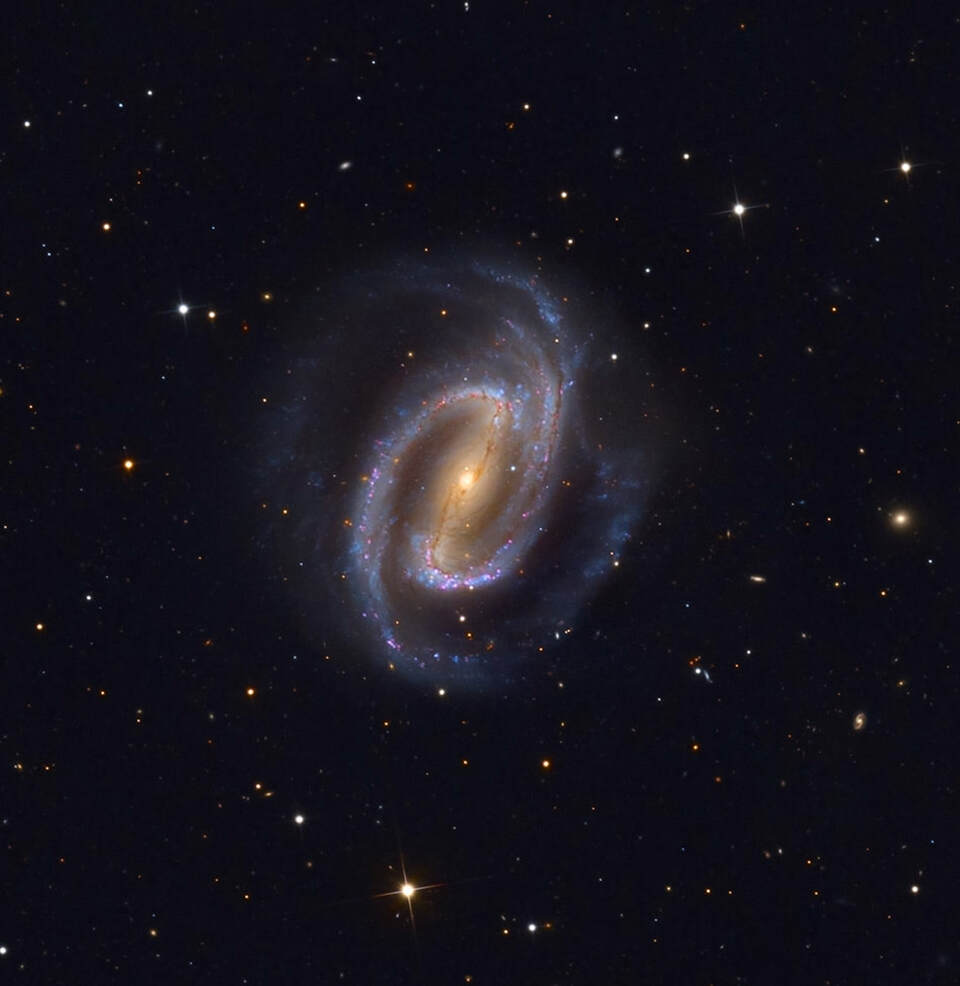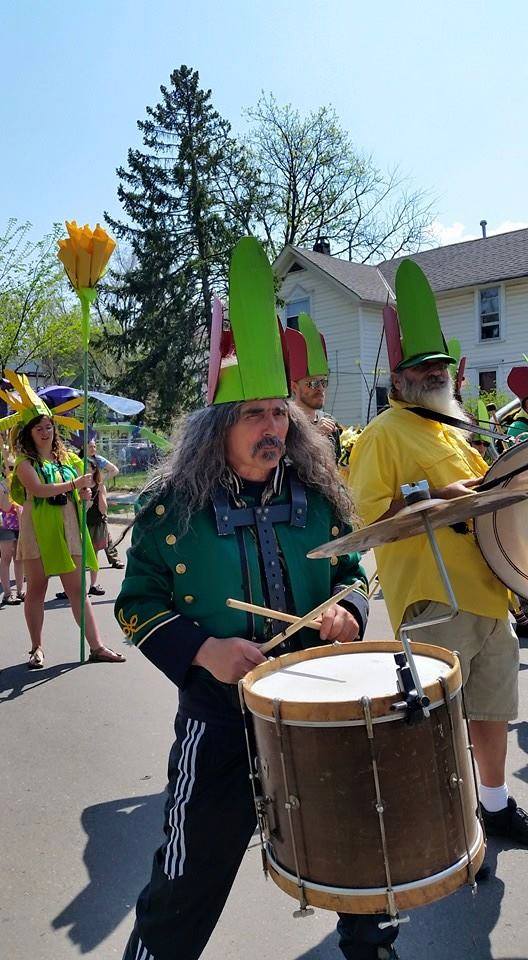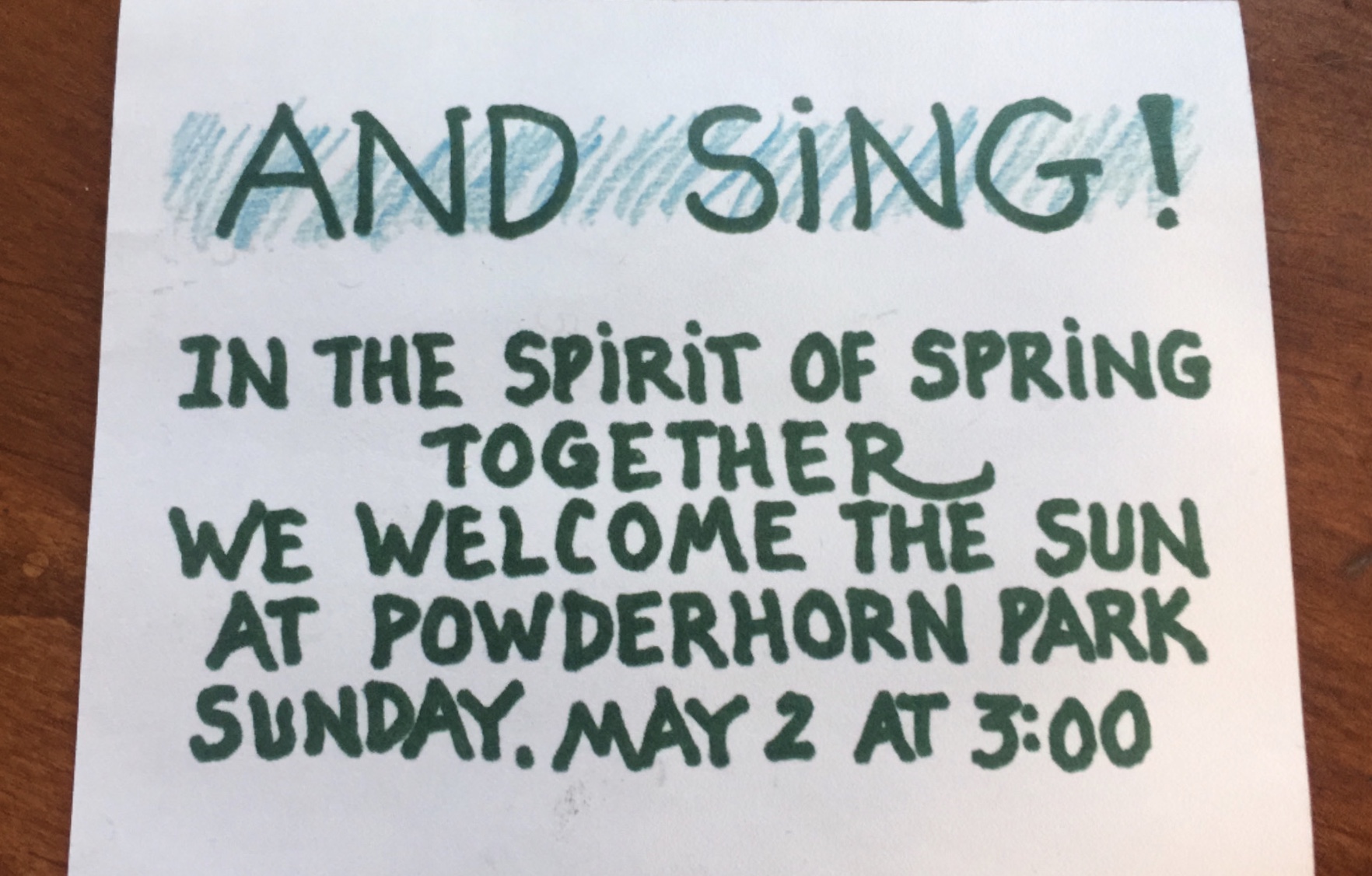Blog
The dark ominous figures are actually molecular clouds, knots of molecular gas and dust so thick they have become opaque. In comparison, however, these clouds are typically much less dense than Earth’s atmosphere. Featured here is a detailed image of the core of the Carina Nebula, a part where both dark and colorful clouds of gas and dust are particularly prominent. The image was captured in mid-2016 from Siding Spring Observatory in Australia. Although the nebula is predominantly composed of hydrogen gas — here colored green, the image was assigned colors so that light emitted by trace amounts of sulfur and oxygen appear red and blue, respectively. The entire Carina Nebula, cataloged as NGC 3372, spans over 300 light years and lies about 7,500 light-years away in the constellation of Carina. Eta Carinae, the most energetic star in the nebula, was one of the brightest stars in the sky in the 1830s, but then faded dramatically.

May 3rd 1933
Legendary and highly-respected Philadelphia pianist / keyboardist Eddie Green was a sideman on dozens of projects, and finally released two CDs as a leader, the long out-of-print debut “This One’s For You” and his posthumously-released coda Shades of Green.
After informal tutoring with Bud and Richie Powell and studying harmony, theory, composition and arranging at Combs College of Music, Eddie Green performed with the likes of Dexter Gordon, Slide Hampton, Donald Byrd, Hank Crawford, Max Roach, Betty Carter, Gary Bartz, George Coleman, Junior Cook and many others. He was on records that went “gold:” Billy Paul’s “Me and Mrs. Jones” and Lou Rawls’ “When You’ve Heard Lou, You’ve Heard It All.” His distinctive touch graced albums by guitar virtuoso Pat Martino, Sonny Criss and Jean Carn; in addition to his musicianship, his talents as as a composer were spotlighted on recordings by his own groundbreaking ’70s fusion group Catalyst, the Odean Pope Saxophone Choir, Rochelle Ferrelle and Suzanne Cloud.
Green appeared internationally at the Mt. Fuji (Japan), North Sea (Holland), Montreaux (Switzerland) and Nice (France) Jazz Festivals. Locally in Philadelphia, he was awarded honors by the Trane Stop Resource Institute, the City of Philadelphia and the Mill Creek Jazz and Cultural Society for both the 1993 and 1994 “Reader’s Choice” Best Jazz Piano.
more...Richard Arnold “Groove” Holmes (May 2, 1931 – June 29, 1991) was an American jazz organist who performed in the hard bop and soul jazzgenre. He is best known for his 1965 recording of “Misty“.
Holmes’s first album, on Pacific Jazz with guest Ben Webster, was recorded in March 1961. He recorded many albums for Pacific Jazz, Prestige, Groove Merchant, and Muse, many of them with Houston Person.
He died of a heart attack after battling prostate cancer, having performed his last concerts in a wheelchair. One of his last gigs was at the 1991 Chicago Blues Festival with his longtime friend, singer Jimmy Witherspoon.
more...NGC 1300 is a barred spiral galaxy located about 61 million light-years away in the constellationEridanus. The galaxy is about 110,000 light-years across (about the same size of the Milky Way). It is a member of the Eridanus Cluster, a cluster of 200 galaxies. It was discovered by John Herschel in 1835.
In the core of the larger spiral structure of NGC 1300, the nucleus shows a “grand-design” spiral structure that is about 3,300 light-years long. Only galaxies with large-scale bars appear to have these grand-design inner disks — a spiral within a spiral. Models suggest that the gas in a bar can be funneled inwards, and then spiral into the center through the grand-design disk, where it can potentially fuel a central supermassive black hole (SMBH). NGC 1300 is not known to have an active nucleus, indicating that its central black hole is not accreting matter.

Judith Marjorie Collins (born May 1, 1939) is a Grammy Award-winning American singer and songwriter with a career spanning over 60 years. She is known for her eclectic tastes in the material she records (which has included folk music, show tunes, pop music, rock and roll and standards) for her social activism, and for the clarity of her voice. Collins has released 28 studio albums, 4 live albums, numerous compilation albums and 4 holiday albums.
Collins’ debut album A Maid of Constant Sorrow was released in 1961, but it was the lead single from her 1967 album Wildflowers, “Both Sides, Now” – written by Joni Mitchell – that gave Collins international prominence. The single hit the Top 10 on the Billboard Pop Singles chart and won Collins her first Grammy Award for Best Folk Performance. She enjoyed further success with her recordings of “Someday Soon“, “Chelsea Morning“, “Amazing Grace“, and “Cook with Honey”.
Collins experienced the biggest success of her career with her recording of Stephen Sondheim‘s “Send in the Clowns” from her best-selling 1975 album Judith. The single charted on the Billboard Pop Singles chart in 1975 and then again in 1977, spending 27 non-consecutive weeks on the chart and earning Collins a Grammy Award nomination for Best Pop Vocal Performance, Female, as well as a Grammy Award for Sondheim for Song of the Year. In 2017, Collins’ rendition of the song “Amazing Grace” was selected for preservation in the National Recording Registry by the Library of Congress as being “culturally, historically, or artistically significant”. In 2019, Judy Collins scored her first #1 album on an American Billboard Chart with Winter Stories at the age of 80 years old.
more...Shirley Valerie Horn (May 1, 1934 – October 20, 2005) was an American jazz singer and pianist. She collaborated with many jazz greats including Miles Davis, Dizzy Gillespie, Toots Thielemans, Ron Carter, Carmen McRae, Wynton Marsalis and others. She was most noted for her ability to accompany herself with nearly incomparable independence and ability on the piano while singing, something described by arranger Johnny Mandel as “like having two heads”, and for her rich, lush voice, a smoky contralto, which was described by noted producer and arranger Quincy Jones as “like clothing, as she seduces you with her voice”.
Shirley Horn was born and raised in Washington, D.C.. Encouraged by her grandmother, an amateur organist, Horn began piano lessons at the age of four. Aged 12, she studied piano and composition at Howard University, later graduating from there in classical music. Horn was offered a place at the Juilliard School, but her family could not afford to send her there. Horn formed her first jazz piano trio when she was 20. Horn’s early piano influences were Erroll Garner, Oscar Peterson and Ahmad Jamal, and moving away from her classical background, Horn later said that “Oscar Peterson became my Rachmaninov, and Ahmad Jamal became my Debussy.” She then became enamored with the famous U Street jazz area of Washington (largely destroyed in the 1968 riots), sneaking into jazz clubs before she was of legal age.
more...Marion Walter Jacobs (May 1, 1930 – February 15, 1968), known as Little Walter, was an American blues musician, singer, and songwriter, whose revolutionary approach to the harmonica had a strong impact on succeeding generations, earning him comparisons to such seminal artists as Django Reinhardt, Charlie Parker and Jimi Hendrix. His virtuosity and musical innovations fundamentally altered many listeners’ expectations of what was possible on blues harmonica. He was inducted into The Rock and Roll Hall of Fame in 2008, the first and, to date, only artist to be inducted specifically as a harmonica player.
Jacobs’ date of birth is usually given as May 1, 1930, in Marksville, Louisiana. He was born without a birth certificate and when he applied for a Social Security card in 1940, his birthdate was listed as May 1, 1923 (over the years he often gave different years, but May 1 was constant. In some other documents he filled out before reaching the age of majority he indicated birth years of 1925 and 1928, probably to appear to be of legal age to sign contracts for recordings and club work. After reaching the age of majority based on a birth year of 1930, he consistently gave his birth year as 1930). He was raised in Rapides Parish, Louisiana, where he learned to play the harmonica. He quit school and by the age of 12 had left rural Louisiana and travelled, working odd jobs and busking on the streets of New Orleans, Memphis, Helena and West Helena, Arkansas, and St. Louis. He honed his musical skills on harmonica and guitar, performing with older bluesmen including Sonny Boy Williamson II, Sunnyland Slim, Honeyboy Edwards, and others. A few months after returning from his second European tour, Little Walter was involved in a fight while taking a break from a performance at a nightclub on the South Side of Chicago. He apparently sustained only minor injuries in this altercation, but they aggravated the damage he had suffered in previous violent encounters, and he died in his sleep at the apartment of a girlfriend, at 209 East 54th Street in Chicago early the following morning. The official cause of death stated on Little Walter’s death certificate was coronary thrombosis (a blood clot in the heart); evidence of external injuries was so insignificant that the police reported that his death was due to “unknown or natural causes”, and no external injuries were noted on the death certificate. His body was buried at St. Mary’s Cemetery, in Evergreen Park, Illinois, on February 22, 1968. Little Walter’s grave remained unmarked until 1991, when fans Scott Dirks and Eomot Rasun had a marker designed and installed.
more...Floyd “Candy” Johnson (May 1, 1922 in Madison, Illinois – June 28, 1981 in Framingham, Massachusetts) was an American jazz saxophonist.
Johnson started on drums before moving to saxophone. His professional career began in St. Louis, where he was a member of a group led by Chuck Finney. He attended Wilberforce University until the draft intervened. After his service, he played in bands led by Ernie Fields, Tiny Bradshaw, and Andy Kirk. With the Kirk orchestra he recorded for Decca Records. He cites Ben Websteras his biggest influence. Johnson preferred candy to alcohol, so a band member started calling him “Candy”. In Detroit he started a band called the Peppermint Sticks. One musician recalled that the band dressed in candy-striped suits, and sometimes Johnson tossed peppermint sticks to the crowd.
In 1951 he was a member of the Count Basie Orchestra, recording with Basie for Clef Records, then began working in more of a rhythm and blues vein with Bill Doggett. The band had hits with “Blip Blop”, “Honky Tonk”, and “Night Train“. He left Doggett in the 1960s to study music at Bowling Green State University.
more...NGC 3898 is a spiral galaxy in the constellation Ursa Major. It was discovered by William Herschel on April 14, 1789.

Barrington Ainsworth Levy (born 30 April 1964) is a Jamaican reggae and dancehall artist.
Levy was born in Clarendon, Jamaica. He formed a band called the Mighty Multitude, with his cousin, Everton Dacres; the pair released “My Black Girl” in 1977. Levy established his solo career the next year with “A Long Time Since We Don’t Have No Love”; though the single was a failure, the fourteen-year-old was a popular performer at Jamaican dancehalls. In an August 2014 interview with Midnight Raver, record producer Delroy Wright revealed that it was his brother Hyman Wright who first met Barrington Levy in the mid-1970s through Wade “Trinity” Brammer. According to Delroy Wright, Hyman Wright recorded a host of tracks with Barrington Levy prior to introducing him to Henry “Junjo” Lawes. These tracks would eventually appear on the album Bounty Hunter, which was released on the Jah Life record label. Both record producers recorded several singles with the Roots Radics, including “Al Yah We Deh”, “Looking My Love”, “Englishman”, “Skylarking”, “Wedding Ring Aside” and “Collie Weed”, all of which became hits and established Levy’s career. Levy’s next few singles were similarly successful, including “Shine Eye Girl”, “Wicked Intention”, “Jumpy Girl”, “Disco Music”, “Reggae Music”, “Never Tear My Love Apart”, “Jah”, “You Made Me So Happy” and “When You’re Young and in Love”. Levy then recorded several duets with Toyan, Jah Thomas and Trinity, and appeared at Reggae Sunsplash in 1980 and 1981. Although albumswere not terribly important in Jamaica at the time, Levy released four albums before 1980: Shaolin Temple, Bounty Hunter, Shine Eye Gal (United Kingdom) and Englishman, a critically acclaimed record. His success led to many earlier studio and sound system performances being reissued without his consent, releases he described as “joke business”.
more...Joseph Thomas “Coke” Escovedo (April 30, 1941 – July 13, 1986) was an American percussionist, who came from a prominent musical family including five musician brothers and his niece, Sheila E. He played in various genres, including R&B, jazz fusion and soul, with bands including Santana, Malo, Cal Tjader, and Azteca.
Escovedo was born in Los Angeles, California, the son of Pedro Escovedo, a plumber and amateur musician, who had immigrated from Mexico at age 12, and Anita (née Valenzuela). Escovedo grew up in the East Bay region of the San Francisco Bay Area. He developed an early interest in jazzand Latin music through exposure gained from his father Pedro, an aspiring big band singer, and eventually gravitated to drums and Latin percussion. Coke’s older brother, fellow percussionist Pete Escovedo, recruited Escovedo for a local Latin jazz combo led by pianist Carlos Federico. The Federico combo evolved into the Escovedo Brothers Band, which also counted Pete, bassist brother Phil Escovedo, saxophonist-flautist Mel Martin and trombonist Al Bent among its regular members.
more...More Posts
- Mississippi Fred McDowell
- George Duke
- Jay McShann
- World Music Mulatu Astatke
- Daily Roots Wiya Lindo
- Cosmo PLCK G165.7+67.0
- Laurens Hammond
- Lee Ritenour
- Slim Harpo
- World Music Trio Mandili
- Daily Roots Mystical Vibes
- Snow & Ice on the Mississippi
- Little Shop of Horrors 2025
- Aynsley Dunbar
- Power to the People
- Temple Israel Service
- Cosmo Barnard 209
- Rod Stewart
- Jim Croce
- Mike Stern




